The town of San Vicente, N. Samar is composed of seven islands. The main town of San Vicente lies isolated south from the six other islands which composes the town of San Vicente. The six other islands which almost face each other like in a circle are Sila (which boasts of a pink sand beach), Tarnate, Sangputan, Panganoron, Maragat and Mahaba. The beautiful beaches are found in these group of six islands. In San Vicente there is only one small cove where people usually go for swimming. San Vicente was formerly known as Destacado island. When it became a town separate from Capul, it was changed to San Vicente, however one barangay in the main town retained its name as Destacado. San Vicente is not yet a parish but only a mission station although having its own permanent priest assigned. Fishing is the main livelihood of the people, hence there is not lacking fresh fish on the table. However, there are still illegal dynamite fishing being practiced. We heard two dynamites exploded when we camped there in Sila.
Last Monday, Nov. 6, 2006 together with Frs. Louie, Mony and Roy and our computer man Ronnie, we visited the island of San Vicente. When I called up the administrator priest of San Vicente, Fr. Jose Sumayop he inquired what I would like to do there. I told him that upon arriving in San Vicente we would like to go to that famous pink sand beach and stay overnight there. He had been there for six months and he had not known that there was a beach with a pink sand and he wondered where I got the information. It was of course related to me by the former administrator, five years before who kept inviting me to visit San Vicente when we visited the nearby island of Capul. And so two days before we arrived, Fr. Joesu went for an inspection tour of the beach and had it cleaned, as it had not been visited for sometime already and there were lots of debris along the beach.
Last Monday, Nov. 6, 2006 together with Frs. Louie, Mony and Roy and our computer man Ronnie, we visited the island of San Vicente. When I called up the administrator priest of San Vicente, Fr. Jose Sumayop he inquired what I would like to do there. I told him that upon arriving in San Vicente we would like to go to that famous pink sand beach and stay overnight there. He had been there for six months and he had not known that there was a beach with a pink sand and he wondered where I got the information. It was of course related to me by the former administrator, five years before who kept inviting me to visit San Vicente when we visited the nearby island of Capul. And so two days before we arrived, Fr. Joesu went for an inspection tour of the beach and had it cleaned, as it had not been visited for sometime already and there were lots of debris along the beach.
We arrived in San Vicente after leaving from the port in San Isidro at 4:30 p.m. after a two hour boat ride. We were told to take snacks first before proceeding to the pink beach. What met us was not just snacks but already a heavy seafood meal of fish na kinilaw, sinugba, pusit na sinugba and calamares, camoteng kahoy, and vegetables nga pipino but the thin one like a sikwa, among others.
We left for the island of Sila where the pink sand beach was supposed to be at past six in the evening. It was a 45 minute boat ride to the island, but it was a glorious night as we saw the moon arising from the east illuminating the seas. In Sila we pitched camp there. This part of Sila is called Binantal. People from the town of San Vicente accompanied us, as well as people from Sila and Tarnate also joined us, as they were the ones who prepared the food for dinner that night. It was really the second dinner for the night. They had with them two newly catched fish and an octopus which were cooked just there. There were almost 50 people there who welcomed us that night. The parishioners coming from San Vicente stayed overnight with us, while the people from Sila and Tarnate went home that night only to return the following morning bringing food again for breakfast. Since we brought with us a portable generator set, we had lights the whole night.
After breakfast and having inspected the truly pink sand beach and done some swimming (there were lots of tiny jelly fish in this part of the beach at this time), we went for an island hopping. From Sila, we visited all the islands which compose San Vicente: Panganoron, Mahaba, Maragat, Sangputan and Tarnate.
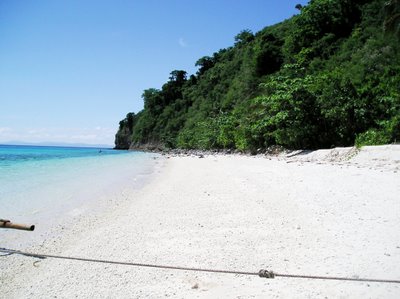 Maragat Island is the second biggest island after San Vicente. Pictured above is the southern end of the island. The current here is so fast that even at midday the water is so refreshingly cool.
Maragat Island is the second biggest island after San Vicente. Pictured above is the southern end of the island. The current here is so fast that even at midday the water is so refreshingly cool.



 Sunset in San Vicente
Sunset in San Vicente

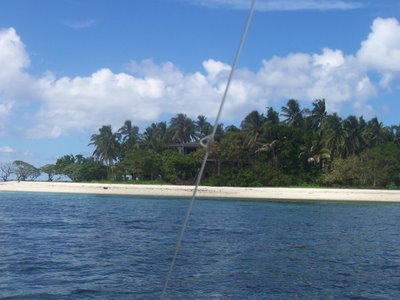 Mahaba Island
Mahaba Island
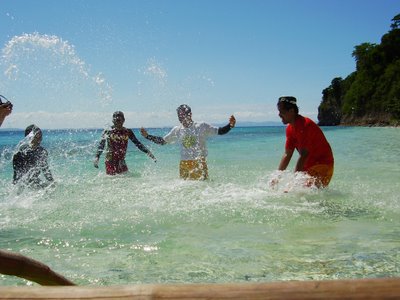
Enjoying the waters of Panganoron island.
 Panganoron island has the best beach for swimming. The beach is clean and white and the waters so clear.
Panganoron island has the best beach for swimming. The beach is clean and white and the waters so clear.
Panganoron Island
 Frs. Louie, Roy and Ronnie having the time of their life in Panganoron island.
Frs. Louie, Roy and Ronnie having the time of their life in Panganoron island.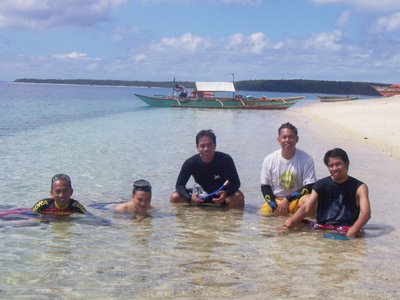 One has not really been to San Vicente if one has not visited the beautiful white beach of Panganoron island. Our host, Joesu, on the right.
One has not really been to San Vicente if one has not visited the beautiful white beach of Panganoron island. Our host, Joesu, on the right.
The island of Sila where the pink sand can be found.
We pitched our tents for the night at Binantal Beach in Sila.
The octopus that was served to us.
People from the barangay of Sila prepared our food for us.
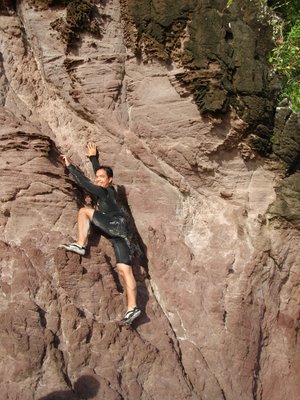
It's Fr. Roy rock climbing, at least for pictures sake!
Chapel of Tarnate


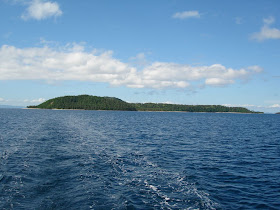









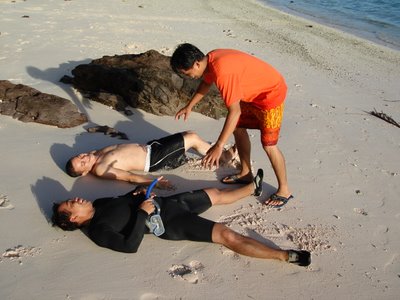 It's really one-of-a-kind pink sand found in the island of Sila.
It's really one-of-a-kind pink sand found in the island of Sila.





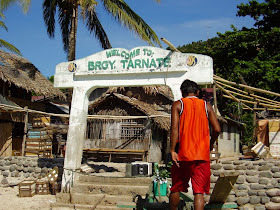








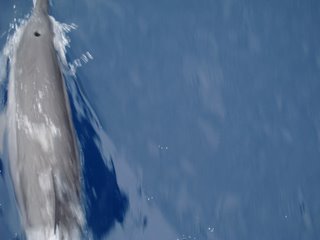
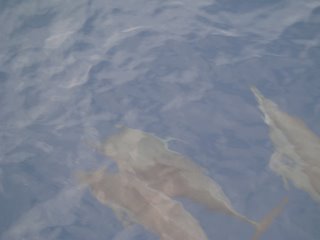




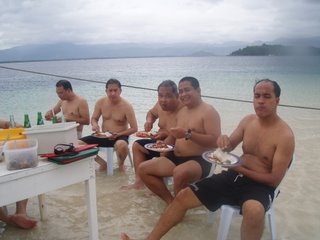

 Fr. Boy Opalalic trying to hold a violet jelly fish that beached itself.
Fr. Boy Opalalic trying to hold a violet jelly fish that beached itself.













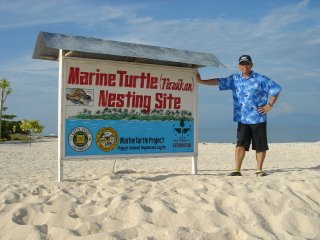

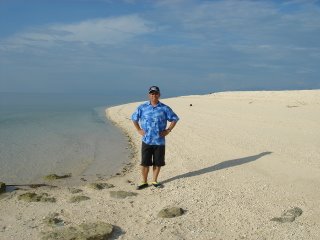
 The parish youth enjoying their outing on an island away from the parish, which is a first after several years.
The parish youth enjoying their outing on an island away from the parish, which is a first after several years.  Tres Marias inside one of the tents that we used for the night.
Tres Marias inside one of the tents that we used for the night.  Fr. Aaron enjoying the sand of Digyo by the hammock.
Fr. Aaron enjoying the sand of Digyo by the hammock. Fr. John Paul who can hardly swim loses his fear of the water and enjoys the clear waters of Digyo.
Fr. John Paul who can hardly swim loses his fear of the water and enjoys the clear waters of Digyo.
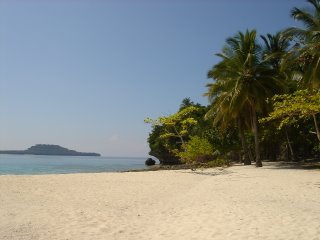 The picture above was taken from the white sand beach of Mahaba. The island at the background is Himukilan. There is a coral reef just a few meters away from the beach of Mahaba. The sea drops off suddenly and on the wall one can see the corals and fishes.
The picture above was taken from the white sand beach of Mahaba. The island at the background is Himukilan. There is a coral reef just a few meters away from the beach of Mahaba. The sea drops off suddenly and on the wall one can see the corals and fishes. 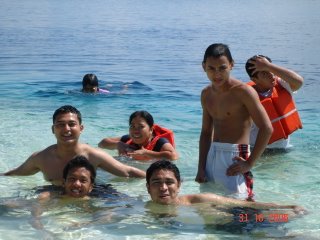 The youth frolicking at the waters of Mahaba
The youth frolicking at the waters of Mahaba